Answer by labsupport on question Answer by labsupport on question Eating in Labs?
Answer reviewed 27 February 2023
School laboratories designated specifically for science practical activities are usually, but not always constructed to PC1 standard.
What the Standards say
Eating and drinking should not occur in any science laboratories. This is clearly stated in AS 2243.1:2021, Safety in laboratories, Part 1: Planning and operational aspects, in section 4.1 Requirements for Safe conduct: [i}
(i) Do not handle, prepare, store or consume food or drink for personal consumption in the laboratory.
(j) Refrigerators, freezers, ovens, microwave ovens used in the laboratory should be labelled to prohibit their use for food or drink for personal consumption
(k) Food or drink for personal consumption shall not be stored in a refrigerator, freezer o cupboard which is used to store laboratory materials. Any human foodstuffs to be used in the laboratory setting for experimental or animal consumption shall be clearly marked “ Not for Human Consumption”.1
Safety must be a priority in the science area. Laboratory surfaces, equipment and glassware can all be a source of contamination from chemical and/or biological material from previous classes. Safe work practices adopted in science should include no eating or drinking in the Laboratory.
Activities conducted in science rooms or using science equipment may use or cook food items, but the food must not be consumed by staff, students or visitors. There are potentially many contaminants in science laboratories. These can come from chemicals, dissection material, biological and microbiological specimens.
A Physical containment Level 1 (PC1) Laboratory
A Physical Containment Level 1 (PC1) laboratory is a classification given to laboratories with certain physical structures that enable the safe handling of material likely to contain microorganisms that are classified as Risk Group 1 microorganisms.2
Digestion practical activities using food could be substituted with alternative activities such as:
- Where students need to masticate food by crushing, substitute by using a mortar and pestle.
- Where human saliva is required, substitute with commercially available amylase (diastase or clarase). Amylase breaks down starch into sugar. Qualitative and quantitative tests for the presence of sugar are suitable for students to perform.
Note: Human body fluids should not be used in school science practical classes due to the risk of disease transmission and their use is prohibited in most school jurisdictions.
Activities using food
Eating food produced can be arranged using alternate food safe rooms and equipment, for example the home economics room.
- Snack tectonics: Geology, earth’s layers, and plate tectonics demonstrations can be eaten provided the activity is not conducted in a science laboratory. Students handling food items should thoroughly wash their hands before handling food. Ensure that food for consumption is not stored in the laboratory or prep room, refrigerators or freezers used for storage of science chemicals or biological material. Food for consumption should not be prepared using science ovens, microwave ovens or science equipment.
- Cheese and yogurt making: The making of food for human consumption such as cheese and yoghurt or the preparation of ginger beer and other similar activities involving foodstuffs should occur in dedicated food preparation facilities such as Home Economics areas using equipment specifically provided for preparing food for human consumption. Equipment from alternative areas of the school should not be cleaned in laboratory sinks or dishwashers. Any shop bought food that has been used in an activity in the science laboratory should not be consumed.
Recommendations
The best basis for planning safety in the laboratory is to consider in advance the consequences of every action. Routine safety procedures and behavioural management processes ensure safe work habits and practices for staff and students. Safe conduct in the laboratory applies to everyone in the laboratory. Some suggestions are:
- Never adopt a casual attitude in the laboratory and always be conscious of potential hazards.
- Discuss the implementation of “no food in labs” at a science faculty meeting. It should be part of the safety policy for science.
- Make signs for the fridges, freezers, ovens and microwave ovens that are used in laboratories or are used to store laboratory materials stating that they are “not to be used for storing food and drink for human consumption”.
- Make signs for the laboratories stating that “food and drink for human consumption must not be handled, stored, prepared or consumed in a laboratory”.
- Make alternative arrangements for science activities where preparation and consumption of food is to take place, either by booking the use of the school kitchen or home economics room, using an alternative classroom or other facility such as an outside shade shelter. Fun activities such as making sherbet, bakers toast and ice-cream are the most common, as they are often used to demonstrate acids and bases and physical or chemical changes, as part of the Australian Curriculum: Science
References
1 Standards Australia. (2021). AS 2243 Safety in Laboratories, Part 1: 2021 Planning and Operational Aspects. Sydney, Australia. This excerpt has been reproduced by ASTA with the permission of Standards Australia Limited under licence CLF1222asta. Copyright in AS 2243:1 2021, Safety in Laboratories, Planning and Operational Aspects vests in Standards Australia. Users must not copy or reuse this work without the permission of Standards Australia or the copyright owner.
2 Standards Australia. (2022). AS/NZS 2243:3 2022, Safety in Laboratories, Part 3: Microbiological safety and containment. Sydney, Australia. This excerpt has been reproduced by ASTA with the permission of Standards Australia Limited under licence CLF1222asta. Copyright in AS/NZS 2243:3 2022, Safety in Laboratories, Microbiological safety and containment vests in Standards Australia [and Standards New Zealand]. Users must not copy or reuse this work without the permission of Standards Australia or the copyright owner.


It is good to recommend that the activity is done in a home economics room